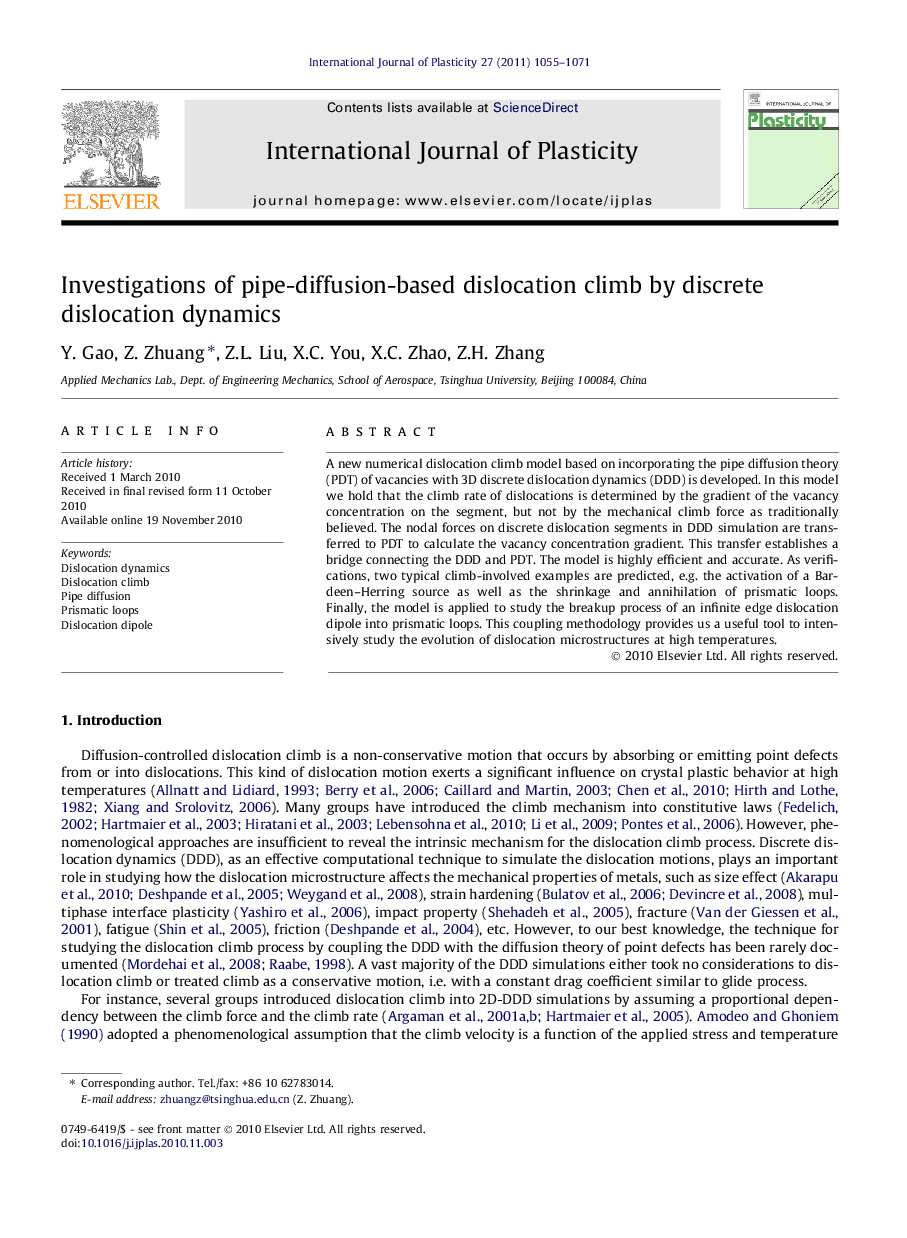| Article ID | Journal | Published Year | Pages | File Type |
|---|---|---|---|---|
| 789160 | International Journal of Plasticity | 2011 | 17 Pages |
A new numerical dislocation climb model based on incorporating the pipe diffusion theory (PDT) of vacancies with 3D discrete dislocation dynamics (DDD) is developed. In this model we hold that the climb rate of dislocations is determined by the gradient of the vacancy concentration on the segment, but not by the mechanical climb force as traditionally believed. The nodal forces on discrete dislocation segments in DDD simulation are transferred to PDT to calculate the vacancy concentration gradient. This transfer establishes a bridge connecting the DDD and PDT. The model is highly efficient and accurate. As verifications, two typical climb-involved examples are predicted, e.g. the activation of a Bardeen–Herring source as well as the shrinkage and annihilation of prismatic loops. Finally, the model is applied to study the breakup process of an infinite edge dislocation dipole into prismatic loops. This coupling methodology provides us a useful tool to intensively study the evolution of dislocation microstructures at high temperatures.
